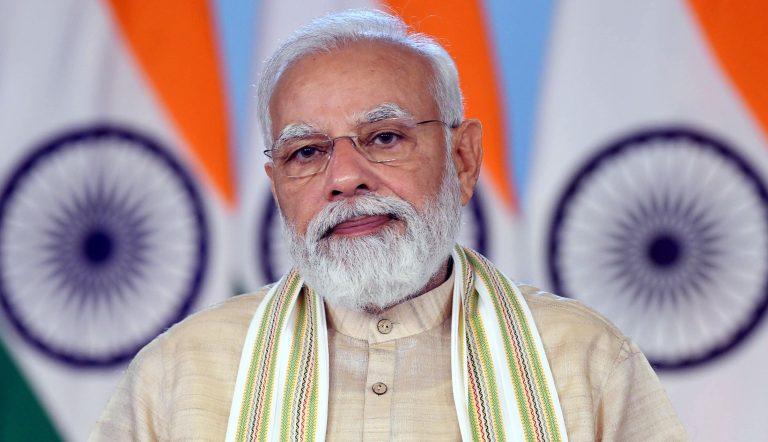Pakistan rediscover the magic of 1992 — for real
SOMETIMES the heavens align. Sometimes it snows in April. Sometimes the magic takes hold of Pakistan cricket, rescues it from the jaws of despair, and clears its path to the pinnacle. At times like this it is best to go with the mood, to trip the light fantastic, to savour Pakistan’s version of magical realism. The Netherlands created the mood, and Pakistan’s bowlers, led by the star-shaped celebrations of Shaheen Shah Afridi, propelled Pakistan into the T20 World Cup semifinals.
New Zealand await Pakistan under the Sydney lights in an echo of 1992. The romantics among us see shades of the cornered tigers in almost every tournament, but for once those comparisons may be genuine.
A miserable start followed by a do or die resurgence. Inspirational bowlers carrying a batting order rediscovering its mojo. Qualification against the odds, delivered by rain, luck, and other results. A left-arm fast bowler perfecting his art; lethal round the wicket. A young leg spinner seizing the world stage. A new international batsman, fearless and audacious. A low-key final group game to see Pakistan safely into the semi-finals. These are the welcome shadows of the past.
And the Adelaide Oval, a historic ground that has seen almost 150 years of cricket, where higher powers intervene to keep Pakistan’s hopes alive. Now, by inspiring the Netherlands to a shock victory over as lacklustre a South African team as you will find. Then, in 1992, by conjuring a rainstorm that saved Pakistan from certain defeat to England and allowed Imran Khan’s team to progress.
The Green Shirts will clash with New Zealand in the semifinals on Nov 9
The similarities are everywhere, and by Wednesday they may well mean nothing, but for now, in this sweet moment, they are powerful and beg the question of whether the miracle can be reworked? History, some say, is circular, always returning to the same point. Well, Pakistan are here again, defying all expectations, with New Zealand standing between them and a World Cup Final at Australia’s Melbourne Cricket Ground.
Perhaps, most importantly, Pakistan have momentum, which is often decisive in the final stages of a world tournament. England have it too — another echo. But it isn’t fate or circumstance that creates momentum, it is the players, the energy they bring, and the manner of their victories.
Pakistan’s momentum resides predominantly in their exquisite bowling attack. This is no statement blinkered by jingoism but a verdict supported by fact. For speed, control, and impact there isn’t a pace attack that can match Pakistan’s. The best decision that coach and captain made was to opt for the attacking option of picking four fast bowlers, and deploy them exclusively in the power play and at the death.
Since that switch, Pakistan haven’t conceded more than 130 runs – admittedly South Africa’s innings was rain affected. Those high pressure performances carried Pakistan. If one of the quartet struggles, the others compensate. Haris Rauf, Naseem Shah, and Mohammad Wasim, have all played their part, with Shah’s audacious change of pace bamboozling Bangladesh as they sought to accelerate.
But the fast bowling hits a higher note now that Afridi is on song. In Adelaide, he delivered an early breakthrough, as he often does, luring dangerous Litton Das into an aerial cut. And when Bangladesh threatened to rally, it was Afridi’s match defining three wickets that ripped the soul out of Bangladesh’s innings. No team enjoys facing a confident Afridi, and Shaheen Shah at his best makes this attack world class.
The other key wickets fell to Pakistan’s spinners. Iftikhar Ahmed showed his growing value with a tight spell and the prize scalp of Najmul Hussain Shanto. Yet the decisive moment once more was courtesy of Shadab Khan, whose reputation as a wicket taking threat in the middle overs is blossoming.
Bangladesh were dangerously placed at 73 for one in the 11th over, before two wickets in two balls from Shadab. They only managed another 54 runs. Controversy accompanied the LBW decision against Shakib Al Hasan, but Pakistan have had their share of misfortune via the decision review system and the third umpire’s call was marginal but fair.
Pakistan needed excellence from their bowlers, as Mohammad Rizwan and Babar Azam again struggled to master Australian conditions. Rizwan was more successful, and it was his unorthodox technique that was largely responsible for a 57 run partnership. But it was hard to watch and they didn’t dominate. Babar, in particular, is in horrible form, a player of effortless class finding each run a great effort.
Mohammad Nawaz, sent in at number three, struggled too. Any target induces anxiety in a knockout game, and Nawaz is finding it hard to hold his nerve in key moments. The start added unnecessarily to the pressure.
It was a relief, then, and a sharp contrast, when Muhammad Haris leapt to the attack and again fearlessly grabbed the initiative. A more orthodox cameo from Masood, who seemed liberated lower down the order, settled the game and Pakistani nerves.
The bowlers and middle order are carrying the team in this World Cup, and Pakistan have another level to reach once their top order starts to function. That may take a hard decision about where the captain bats, but if he and Rizwan prosper too Pakistan will be truly formidable opponents.
Pakistan’s second world title in Australia is, from nowhere, more than a distant dream. This is the way of Pakistan cricket, and the noise of Pakistan’s prospects is a growing clamour, where the mood and the moment are amplified by echoes of a legendary past. At times like these, the magic of Pakistan cricket feels almost real.
Published in Dawn, November 7th, 2022






